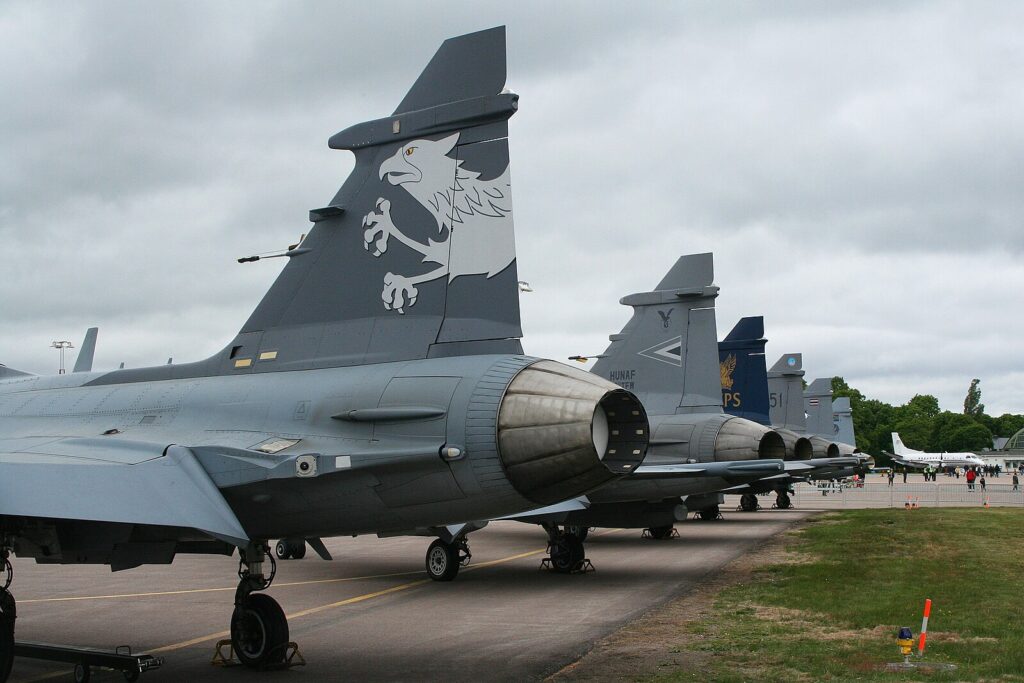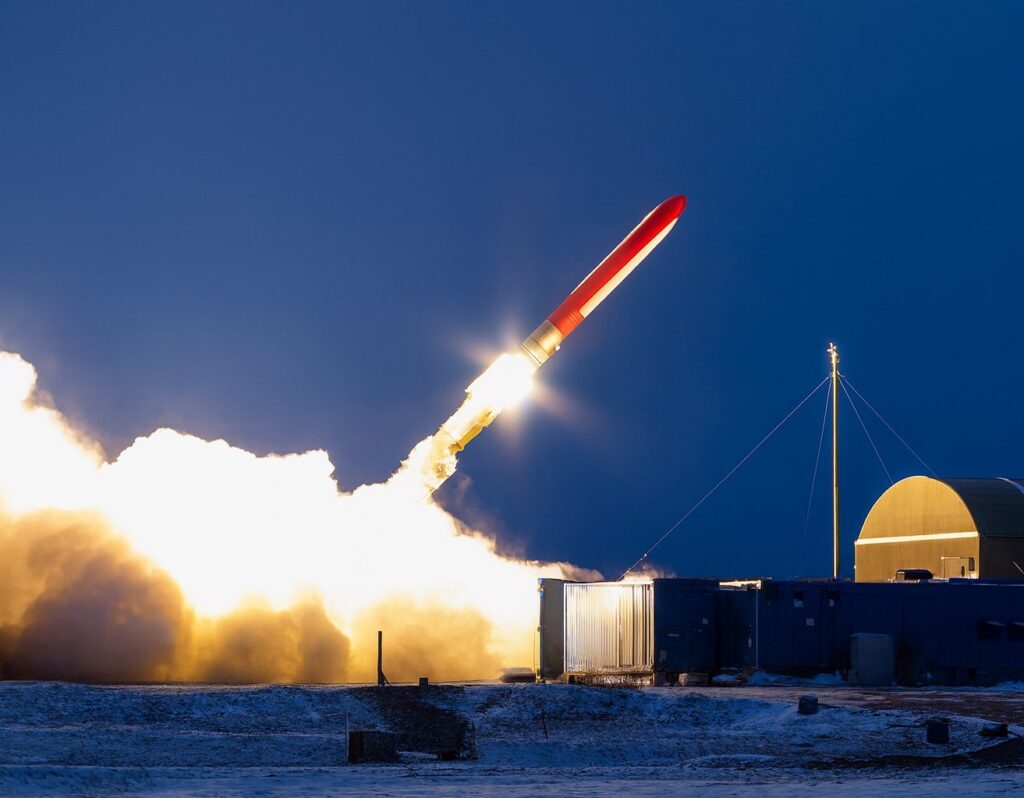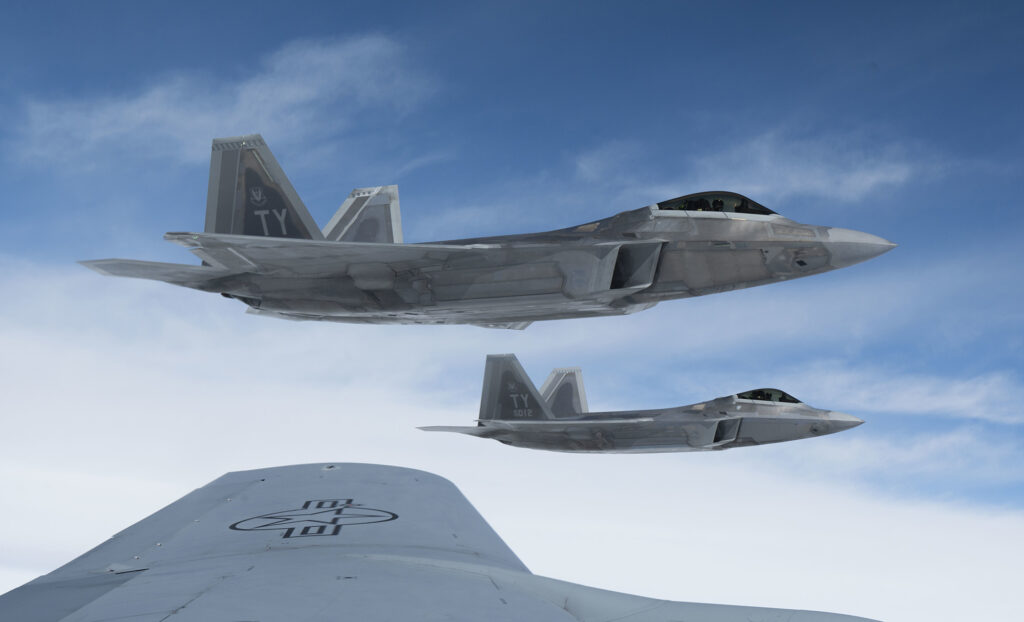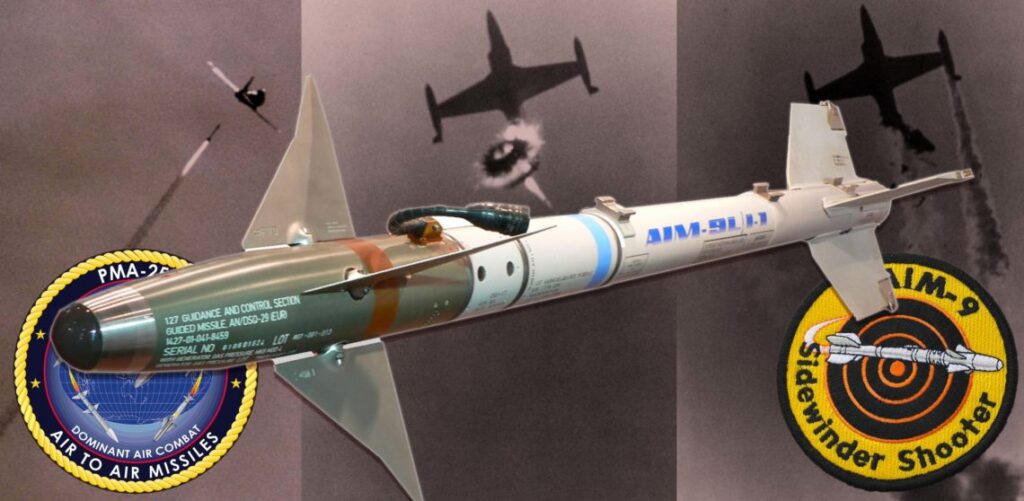It’s no longer science fiction: the U.S. Air Force has now officially unveiled both of the world’s first-ever artificial intelligence-piloted fighter jets: the Anduril YFQ-44A and the General Atomics YFQ-42A.
Both of these AI-enabled drone wingmen are now going through ground testing and are eventually meant to fly alongside America’s new stealth fighter, Boeing’s F-47, as well as America’s new Block 4 upgraded F-35, all of which should start flying before the end of the decade.
These drones were awarded Increment 1 contracts (meaning a contract for the first batch of aircraft) as a part of the Air Force’s broader Collaborative Combat Aircraft program. They are meant to support advanced air-to-air combat operations and future designs will enable other mission sets like attack (air-to-ground) operations, electronic warfare, and more.
Anduril’s FQ-44, which is how it will be known once it enters service, was the first to be revealed to the public when Air Force Chief of Staff General David Allvin posted a brief video of it on May 1.
This high-performance drone, known internally at Anduril as Fury, is said to be roughly 20 feet long with a 17-foot wingspan. It is powered by a single FJ44 turbofan engine that produces roughly 4,000 pounds of thrust. This is enough to propel it to just under Mach 1 while carrying an intended payload of two AIM-120 AMRAAM radar-guided air-to-air missiles. It will also allow it to perform maneuvers with loads of 9gs or more, beneath a service ceiling of 50,000 feet.
Ground testing is officially underway for our Collaborative Combat Aircraft program! This is a huge milestone and another step toward first flight and rapid delivery to our warfighters… These unmanned fighters are going to be badass! (1/3) pic.twitter.com/HiuWMzmcc7
— General David Allvin (@OfficialCSAF) May 1, 2025
The FQ-44’s road to service began in the late 2010s. It was first developed by Blue Force Technologies as a “Red Air” fighter drone meant to simulate the air-to-air capabilities of the best-performing fighters in adversary arsenals, like Russia’s Su-57 and China’s J-20, and be pitted against American fighters in training. The platform matured with this goal until 2023, when Anduril purchased Blue Force Technologies and shifted the program’s focus away from emulating enemy stealth fighters and toward shooting them down instead.
With a single standing vertical tail, swept trapezoidal wings, and a chin-mounted intake, the FQ-44 is roughly half the size of an F-16, and is set to make its first flight later this summer.
Related: Anduril’s Roadrunner is a unique reusable missile interceptor
The FQ-42 from General Atomics, which was revealed for the first time today, is a low-observable drone meant to fly out ahead of crewed fighters to collect intelligence and relay it back. It has a design that’s largely based on the company’s existing XQ-67A. However, the released image suggests its dorsal-mounted air intake has been made slightly less pronounced. It also looks like the FQ-42’s standing vertical tail surfaces may be a bit smaller, but it’s hard to say for sure because of the different angles these pictures were taken at.
At 28.9 feet long with a 22-foot wingspan, the XQ-67A is a fair bit larger than Anduril’s FQ-44, so it stands to reason that the FQ-42 fighter drone based on it may be as well. The XQ-67A sensor drone was limited to a reported top speed of just 652 miles per hour (around .85 Mach) and a service ceiling of just shy of 45,000 feet, but its FQ-42 fighter sibling likely bests both of these metrics in service of its air-to-air mission focus. Likewise, the XQ-67 boasted an impressive unrefueled range of 2,128 miles, giving it a combat radius of more than 1,000 miles – but improved performance in the FQ-42 may bring those figures down.
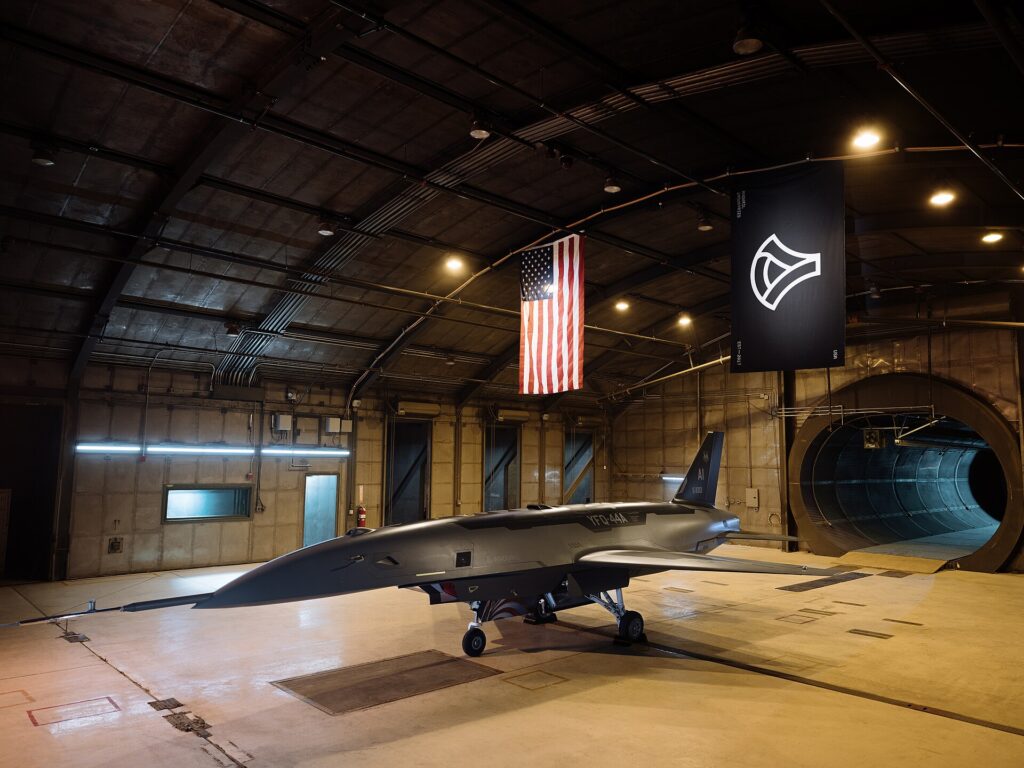
In an infographic released by General Allvin earlier this month, both the FQ-42 and FQ-44 are shown to have a combat radius of more than 700 nautical miles or 805 regular miles. It also lists the top speed of each platform as classified, which may point toward the possibility of higher-thrust turbofans being considered to give these platforms supersonic performance. Although, it’s worth keeping in mind that most fighters don’t fly at supersonic speeds very often, so a subsonic top speed may not be a significant concern.
General Atomics’ new FQ-42 is undergoing ground tests ahead of its flight test regime.
The artificial intelligence that will ultimately pilot these aircraft scored its first virtual victories against human fighter pilots in DARPA’s AlphaDogfight trials held in August 2020. By December 2022, artificial intelligence was at the stick of a very real and heavily modified Block 30 F-16D known as the X-62A VISTA. Just two years later, in May 2024, former Air Force Secretary Frank Kendall revealed that the AI “agent,” as it’s known, was already considered roughly equal in dogfighting skill to Air Force test pilots with more than a decade’s worth of experience.
In April of this year, the Air Force began installing the hardware necessary to turn over another half dozen combat-coded F-16s to AI control out at Eglin Air Force Base in Florida. Dubbed Project VENOM, for Viper Experimentation and Next Gen Operations Model, these F-16s will fly increasingly complex air combat exercises with human pilots in the cockpit, allowing the AI to learn from their example as it continues to mature toward service.
In between flights, these AI agents continue to run thousands of simulated sorties, compounding upon lessons learned from human operators to rapidly advance the AI’s combat capability set.
The Air Force intends to purchase at least 1,000 drone fighters for these AI agents to pilot by the close of the decade. Initial plans are to provide each new F-47 and Block 4 F-35 with at least a pair of drone wingmen, though recently revealed test data suggests a single fighter could easily manage far more. Lockheed Martin has, according to their CEO Jim Taiclet, already demonstrated the ability to coordinate eight drones from a single F-35.
Feature Image: The YFQ-42A drone. (U.S. Air Force/X)
Read more from Sandboxx News
- New details emerge on the F-47, America’s 6th-generation stealth fighter
- America’s power grid could be vulnerable to Chinese hijacking, report finds
- F-35 will be upgraded to the twin-engine F-55, says President Trump. But how realistic is that?
- The F-22 Raptor will get a ‘super’ upgrade, says President Trump
- Danger, Mines! Delta Force misadventures in Bosnia






